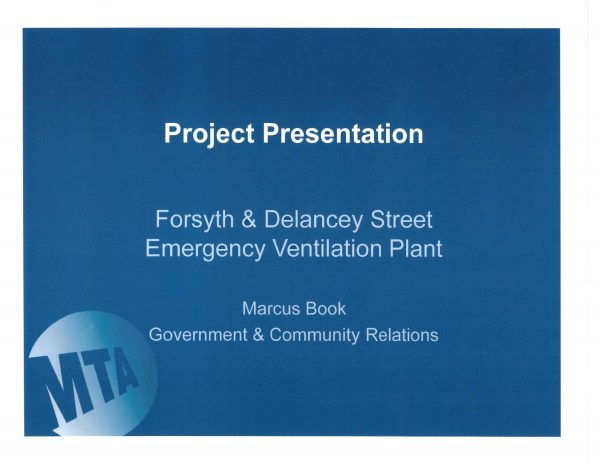BirdLink Officially Opens on June 25 at 4pm
Good news in the land of climate resiliency!
All Welcome to Sara Roosevelt Park near Chrystie and Houston Streets – inside the Park – you’ll see it!

Juneteenth POSTPONED Until SATURDAY June 29th 12noon
DUE TO RAIN! Still gonna be fabulous!
With special thanks to Council Member Chin, Partnerships for Parks, and City Parks Foundation!


NY4P and the Play Fair Coalition helped secure a historic investment for our parks: $43 million!
This is HUGE.
From New Yorkers for Parks:

| “In February, we launched the Play Fair Campaign – demanding $100 million in additional investment for the NYC Parks Department to support much-needed maintenance and operations funding after decades of underinvestment. After uniting over 140 organizations [including Sara Roosevelt Park Community Coalition!] to form the Play Fair Coalition, meeting regularly with parks advocates to understand their needs, holding two rallies at City Hall attended by hundreds of New Yorkers, gathering more than 540 Play Fair petition signatures, giving hours of testimony, and attending multiple meetings with Council Members… City Hall has listened! Here’s what we know so far about this funding: – $12M in restored funding including: – $9.5M to baseline and finally make permanent 100 City Park Workers and 50 Gardeners positions …fighting for since 2014! Funding to extend the beach and pool season – $31M in new funding for: Additional maintenance workers and gardeners 50 new Urban Park Rangers 80 new Parks Enforcement Patrol officers Additional funding for forestry Funding for GreenThumb gardens We are especially thankful to our founding Coalition partners, the New York League of Conservation Voters and District Council 37. We also want to thank Speaker Johnson for his fearless leadership and dedication, the City Council for their ongoing support of our campaign, and the Administration for working to ensure that parks have not been forgotten this budget season. “ |
and we all thank New Yorkers for Parks for their fierce, relentless and principled leadership in this fight.
BIRDLINK in SDR Park opens June 25 4pm!
At Houston/Chrystie

From the Lo-Down: Artist Anina Gerchick unveiled her latest BIRDLINK sculpture in Sara D. Roosevelt Park last Sunday. The living art sculpture made its way here after a prototype was set up on Governor’s Island last summer. Another sculpture was set up in the East River State Park in Williamsburg last fall. The project is meant to alert people to the challenges faced by migrating birds that may be on the edge of extinction.”
From BoweryBoogie: “This jungle-like framework – assembled with an ascending design of crates and wood poles – offers food and shelter throughout the year for the “lower and middle canopy” local birds, as well as insects and butterflies. It’s also a refuge for birds migrating biannually through the area.”

A Tree Falls on Chrystie Street
Karlin spotted the fallen tree.
From BoweryBoogie: “…Chrystie Street, just north of Grand” for photo go to BoweryBoogie website link.
This is why we fight for a Parks base line budget – we need to fund more arborists!
Emma Lazarus Students, “The Hort”, and the Park’s Department Gardener Working on Hester Plots
From The Hort’s* Pam Ito:
“High school students from Emma Lazarus on Hester Street woke up early on their DOE day off to work in Sara Roosevelt Park yesterday. With support from Council Member Margaret Chin and oversight from Park Department gardener Kaitilin, 18 English language learners planted four dozen perennials. The students weeded in three areas along Forsyth, then planted in two. Please stop by and say hello to the lirope, vinca, echinaces, bee balm and hostas!
*The Horticultural Society of New York
Update: MTA Work on Forsyth Street
Thanks to Gigi Li of Council Member Chin’s office and the MTA (and the diligence of Tessa Huxley) we have an update on the MTA projected work on Forsyth Street across from M’Finda Kalunga Garden. Click to open full PDF 
Lead in the Land
By Christopher Werth May 16, 2019
WNYC Tested for Lead in 3 NYC Parks. See here for the results.
“Testing on a first order would be the most important thing, and then you can share that information,” said Landes. “You and I can make informed decisions about maybe where our children make mud pies and where they don’t make mud pies. But you don’t necessarily have to immediately close down a whole park just because there are a few samples that might be above a certain threshold….”
“…Cheng recommends covering contaminated areas in parks — either with clean soil, mulch or landscaping fabric — as opposed to removing it, which can cause its own set of problems. The city already operates what it calls a “Clean Soil Bank” that helps identify uncontaminated sources of soil. These originate from construction projects in Queens that are digging up largely untouched glacial deposits that then get distributed to sites that need it.
….That said, the lead levels WNYC found in parks are relatively low compared to many private yards. Cheng’s lab offers soil testing to the public for $10 a sample. It’s analyzed close to 3,000 of them from across the city, including community gardens. The highest tested at nearly 9,000 ppm. The average for many yards ranges from 400 to 1,200 ppm…
“In New York, I’ve just been very surprised at how high the levels are…”
“Update May 22, 2019: After this story ran, the office of Corey Johnson, Speaker of the New York City Council, responded to WNYC with the following statement: “The council is concerned about limiting childhood lead exposure from all sources, including soil. We are working on a second round of lead bills, including bills that address lead levels in soil. We expect to pass those bills before the end of the year.”

- Go to the previous page
- 1
- …
- 57
- 58
- 59
- 60
- 61
- 62
- 63
- …
- 165
- Go to the next page






